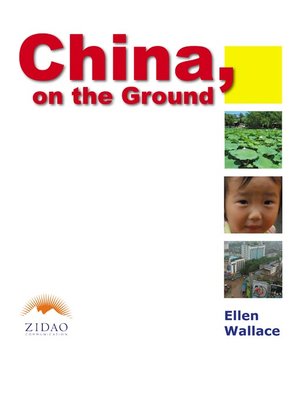
Sign up to save your library
With an OverDrive account, you can save your favorite libraries for at-a-glance information about availability. Find out more about OverDrive accounts.
Find this title in Libby, the library reading app by OverDrive.



Search for a digital library with this title
Title found at these libraries:
| Library Name | Distance |
|---|---|
| Loading... |
China, on the Ground is a seasoned reporter’s personal notes on China today, in seven cities in one month (July), compared to the country as she saw it 19 years earlier.
Special features: 75 pages of text; 100 color photos that capture the changes; background and 91 links to web articles that provide a well-researched blend of the humorous and the serious, the entertaining and the informative. The publisher offers readers, with proof of purchase, a printer-friendly version, in black and white and without photos, designed to appeal to travellers in particular. Additional offer: monthly updates and additions to web links.
Ellen Wallace uses a light touch to compare China’s shift to a market economy country, viewed from the ground today, to the barrage of reports in the press. Most of these take the measure of China as it flies at high speed into the future, without pausing long to observe the Chinese as they move about their daily lives.
In 1985 Paris-based American journalist Ellen Wallace and her Swiss-based British companion Nicholas Bates, an economics teacher with a special interest in developing economies, spent 10 weeks crossing China, together but without guides, on bicycles. The country had officially welcomed foreign travellers for only a short time and few tourists ventured beyond the major cities of Beijing, Shanghai and Guangdong. A bureaucratic oversight made it possible for the pair to travel through areas closed to tourists, where foreigners had not been seen in many years, if ever.
But the China of the future belongs to a new generation. In January 2004 Liam Bates, age 16, British, American and soon-to-be Swiss citizen, decided that he wanted to study Chinese in order to better learn wushu, often known (and misunderstood) in the West under the name “kung fu”. This was despite, and not because of, his parents’ trip to the fabled Middle Kingdom during the dark era before his birth. He spent hours scouring the Internet, signed up for Chinese classes, made and sold web sites to earn money for the trip, until it was clear that this was not a moment’s impulse.
The Bates-Wallace couple’s extended return trip to China was their third visit: a brief second trip to Shanghai and Beijing for an education conference in 2001 had softened the shock of seeing the country transformed. It also reminded them how different a traveller’s observations are when a country is seen as the backdrop to a business trip, from the comfort of a good hotel and with meals in restaurants for foreign tourists.
They travelled by plane and bus in 2004. Bicycles and their riders were becoming endangered species. The number of areas closed to foreigners had dwindled to the point where most other foreign tourists were unaware that China ever had a restrictive travel policy.
To keep this intentionally short book tightly focused, the author chose to write about urban, rather than rural, China. She left aside the complex political issues that are central to the country’s development and its relationships with other nations. She has left to others, for now, the postcards home that explain the historical and cultural significance of the sites seen on most tours of China.







